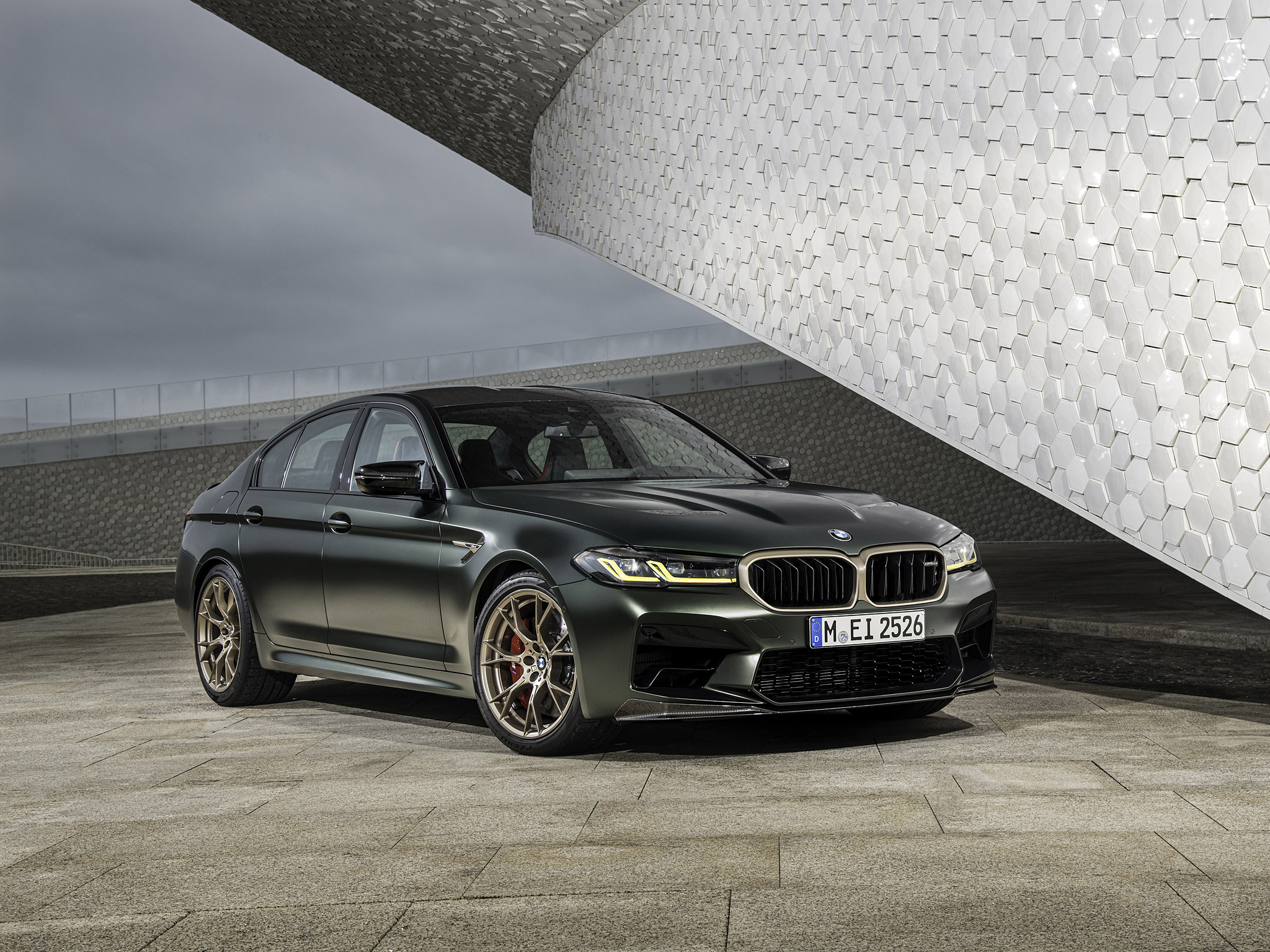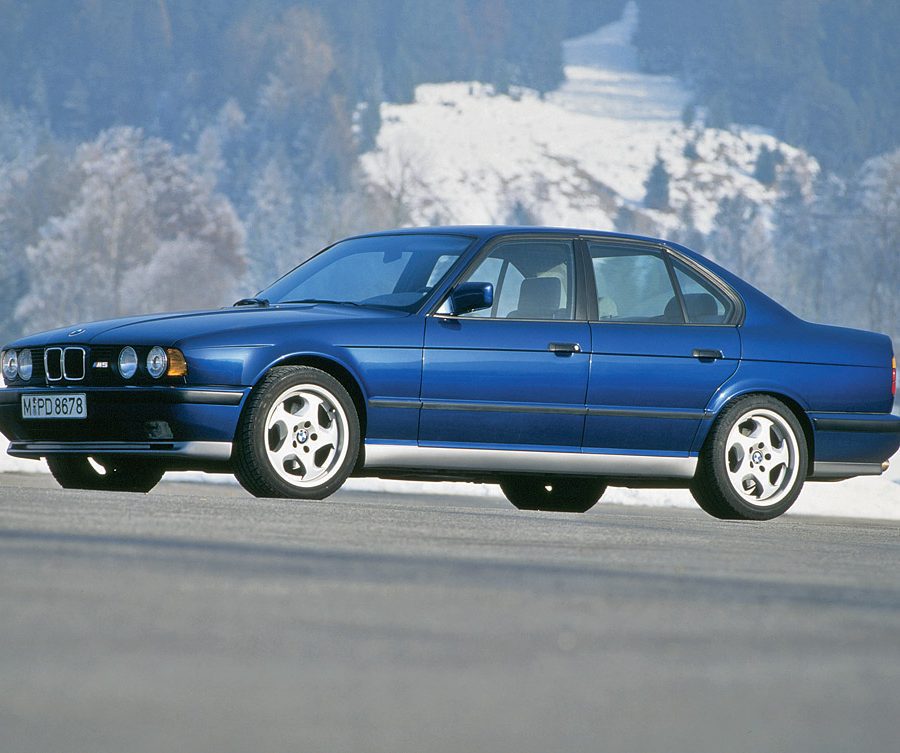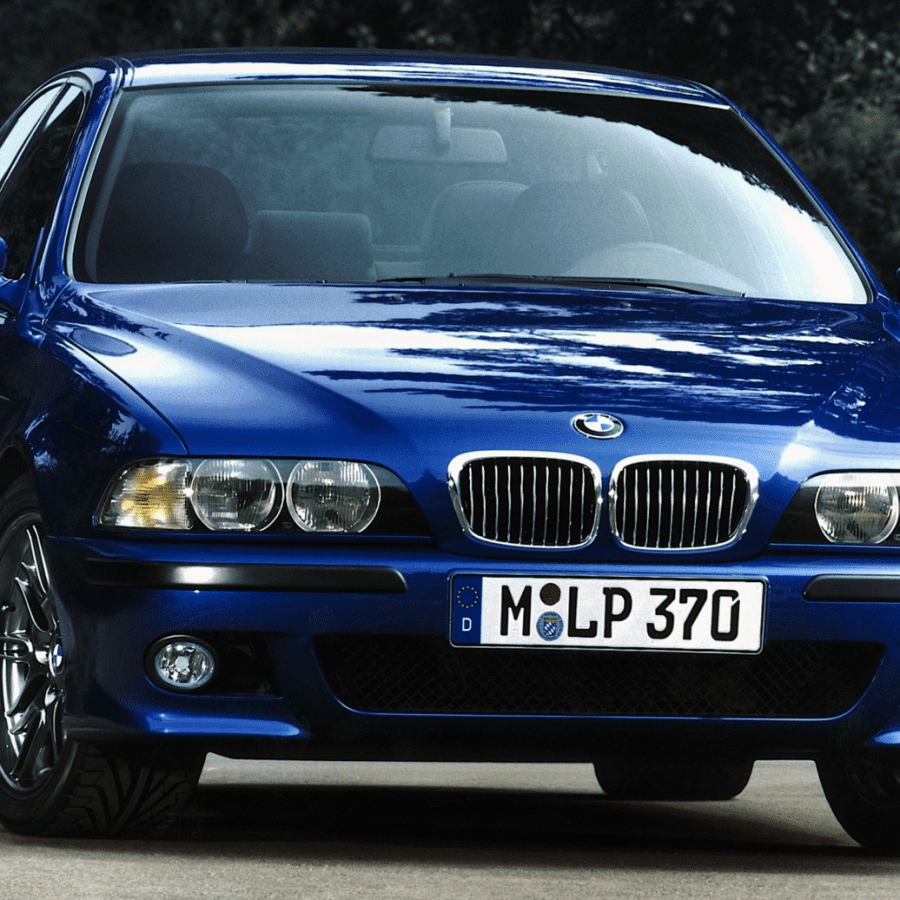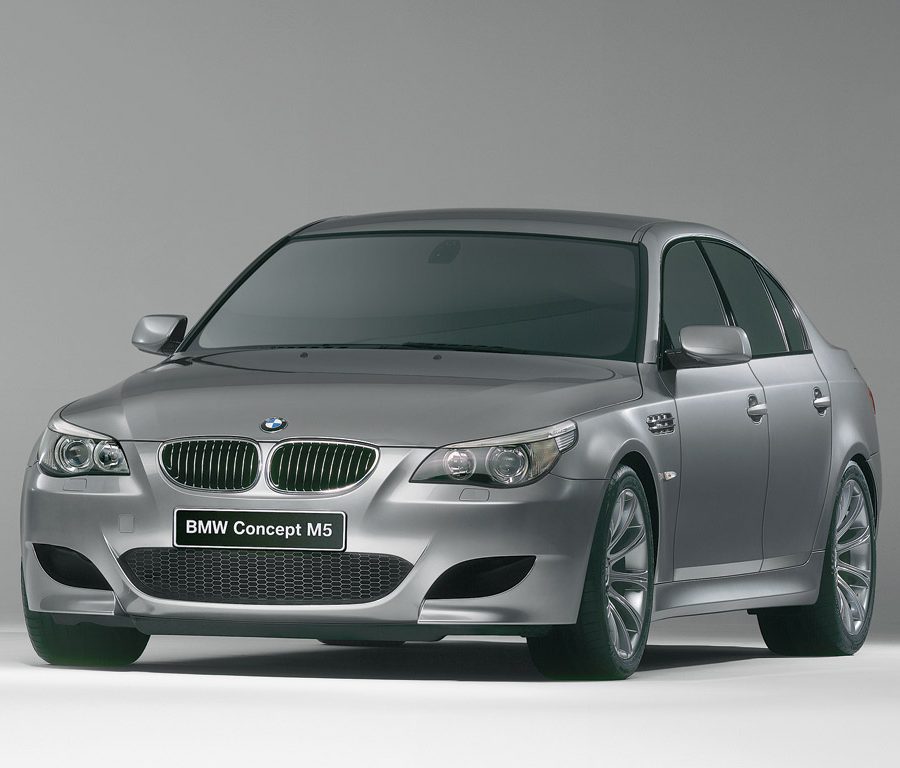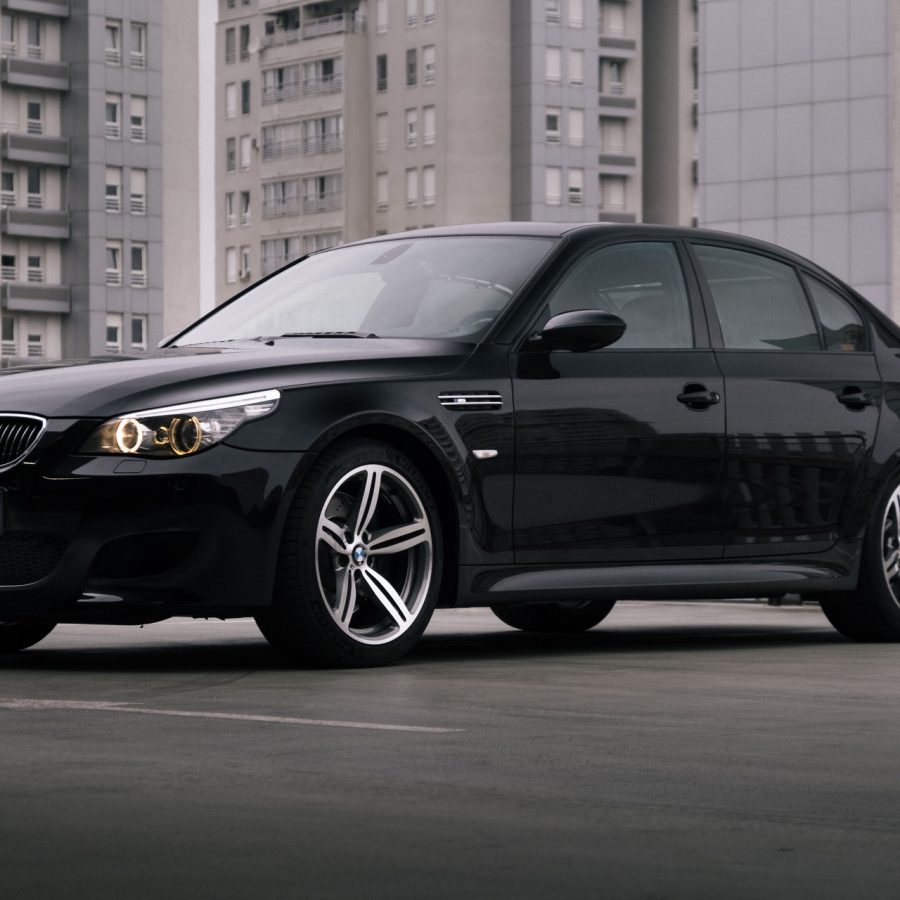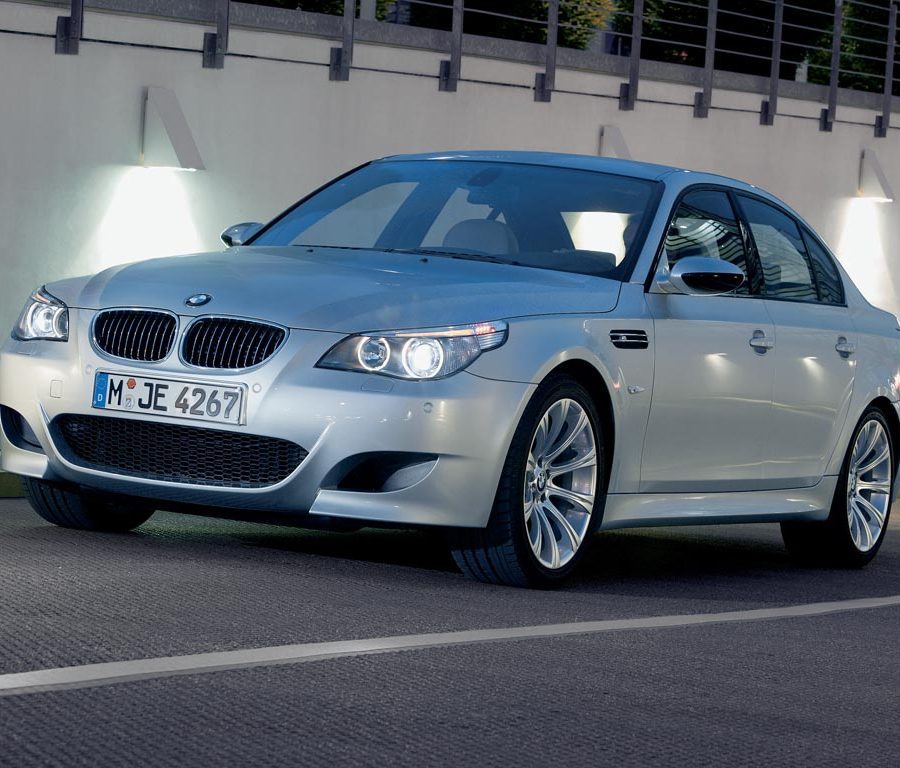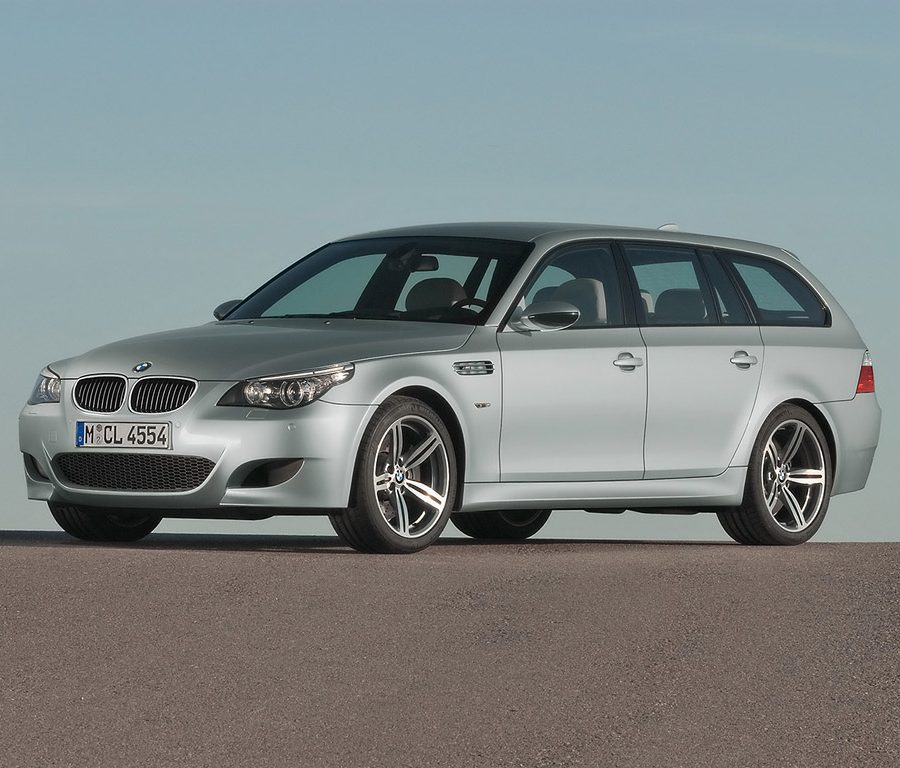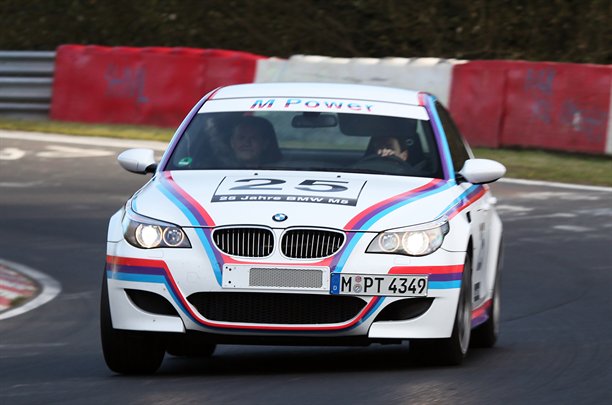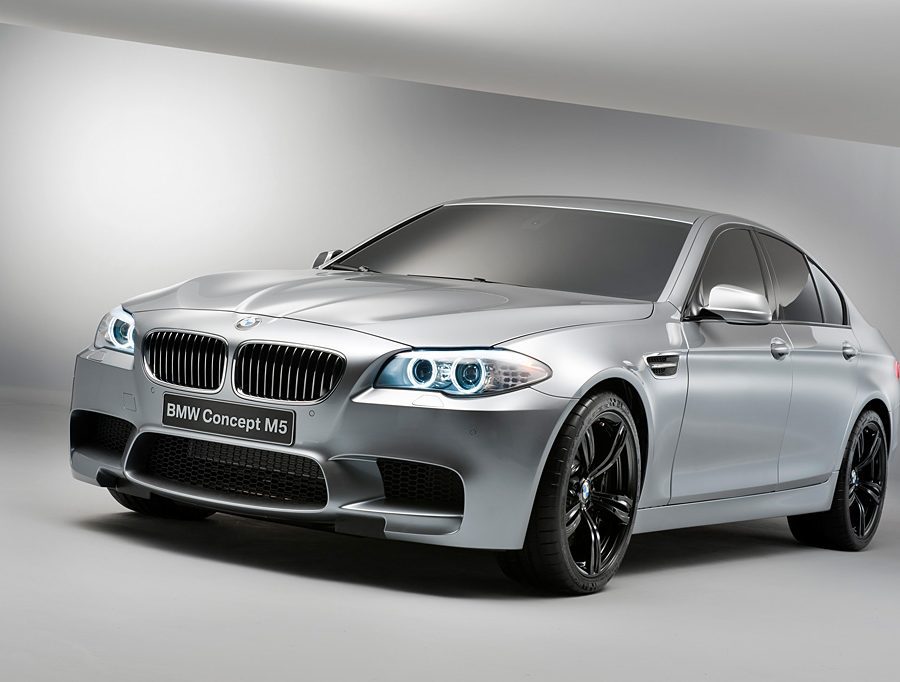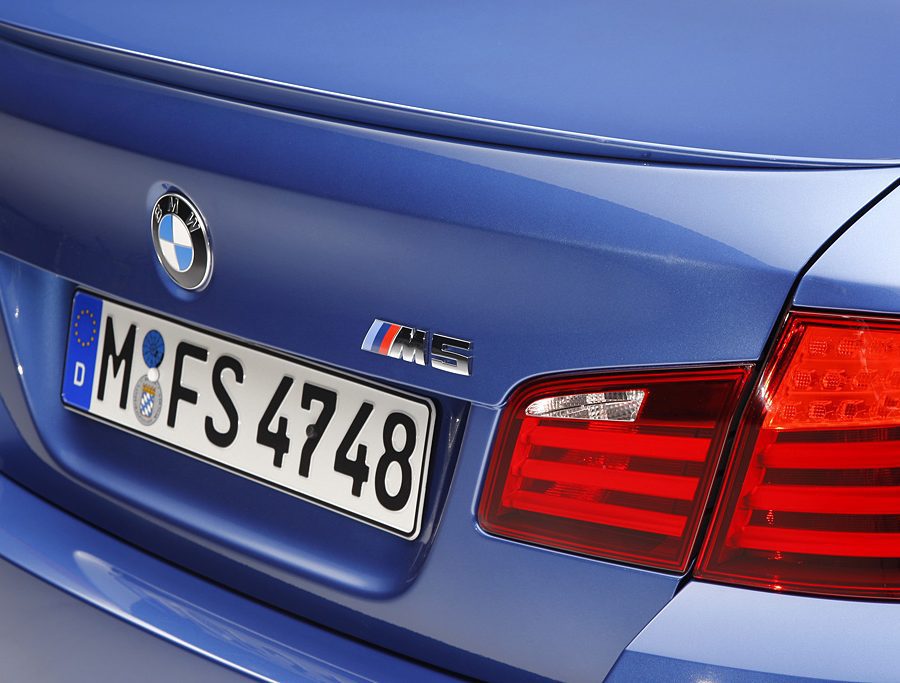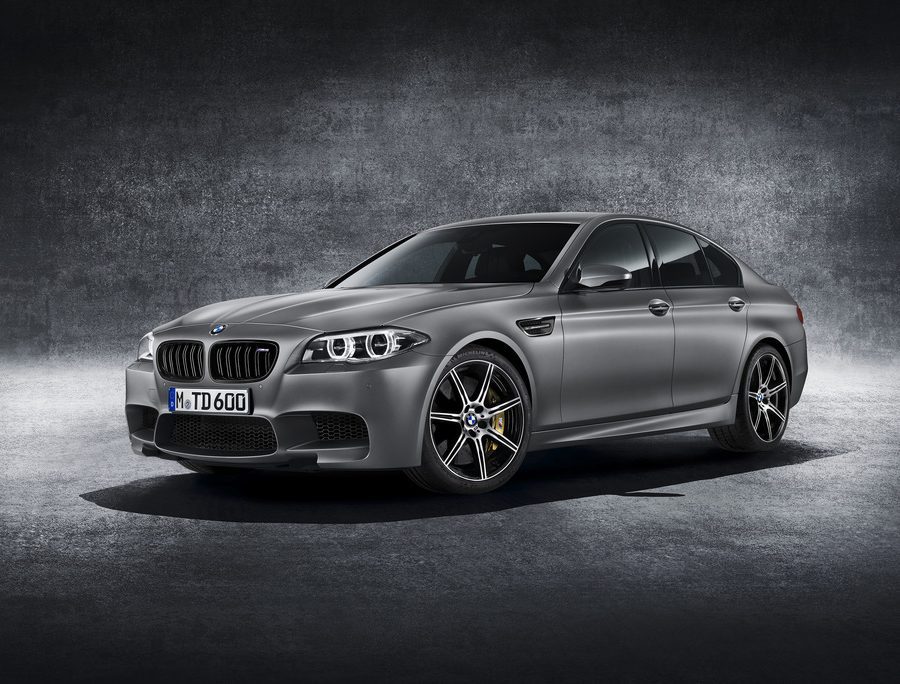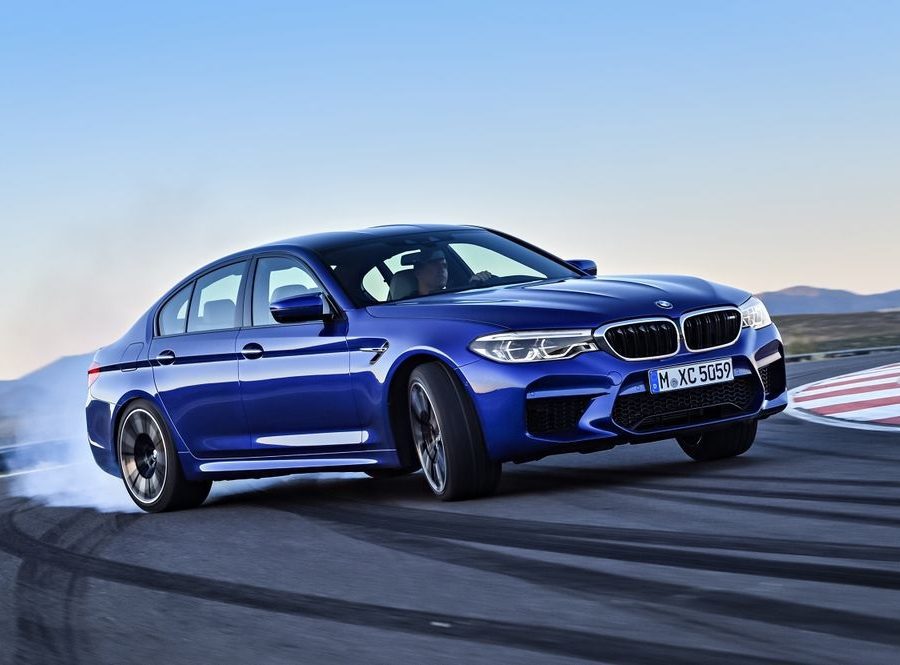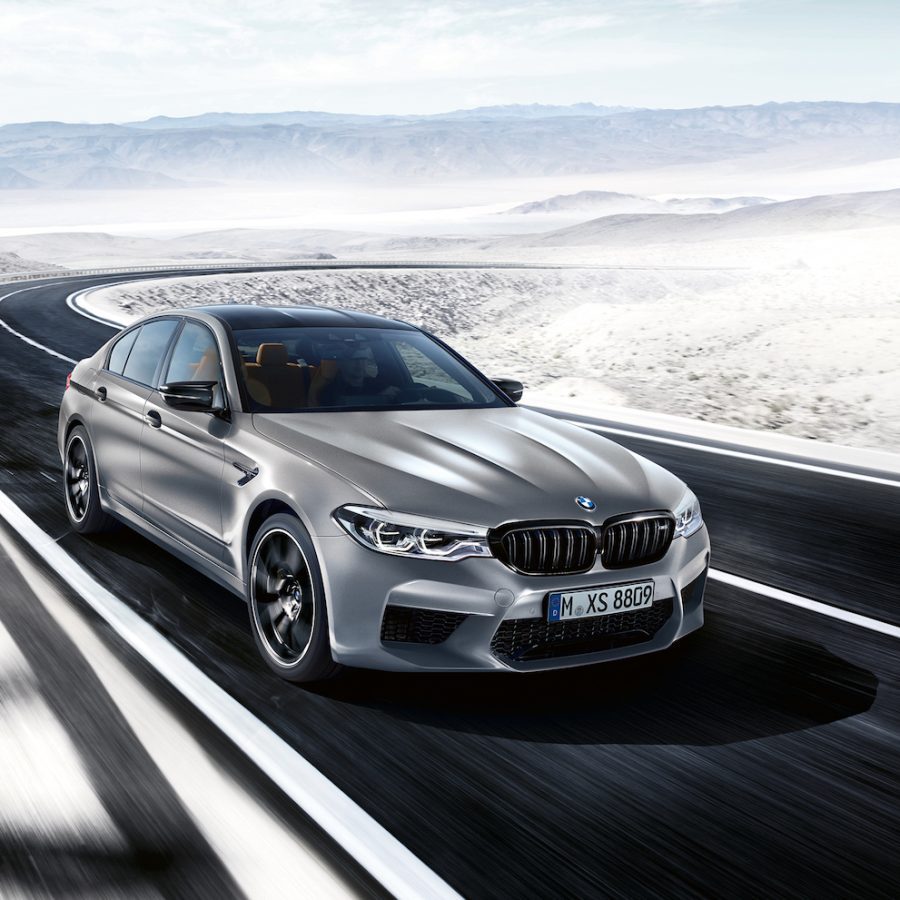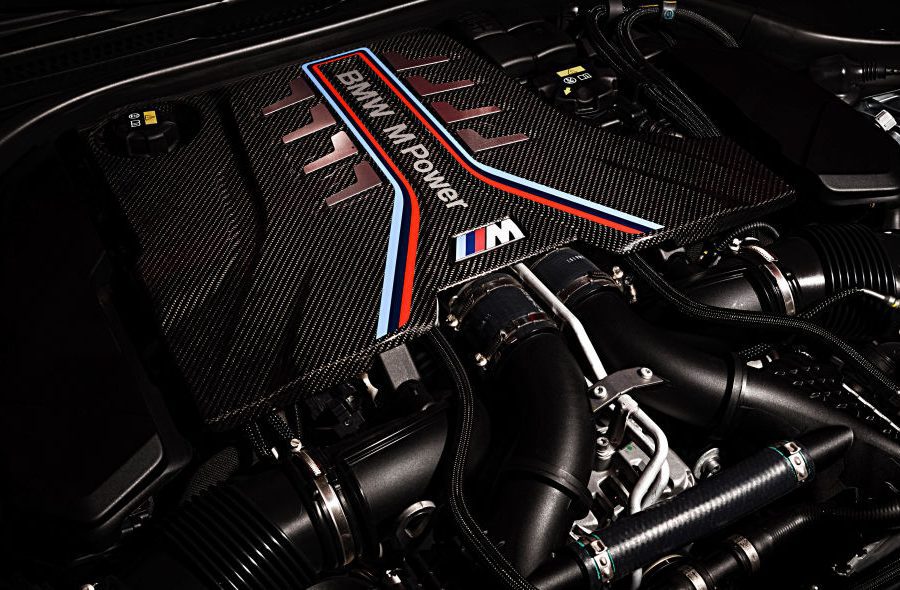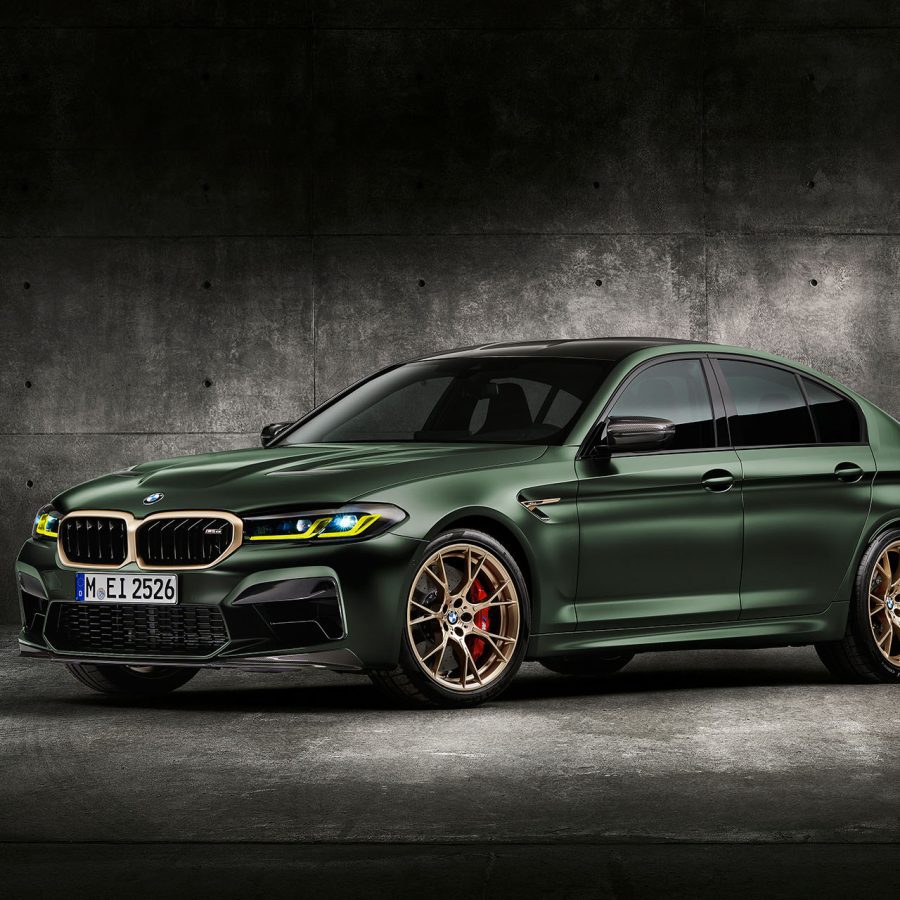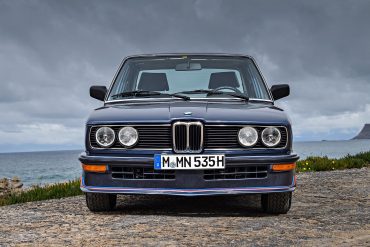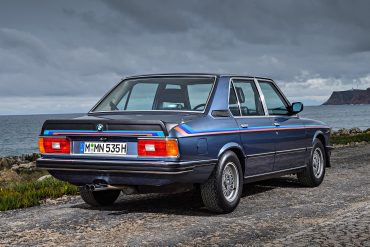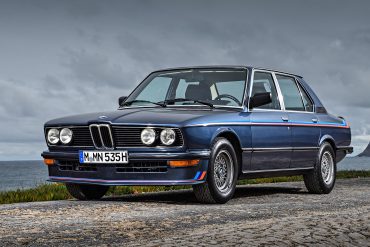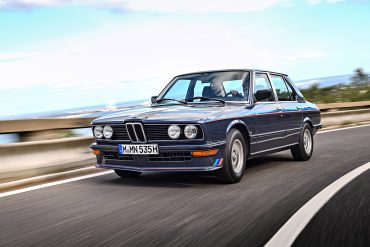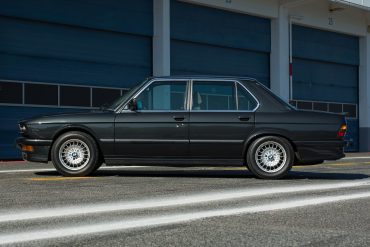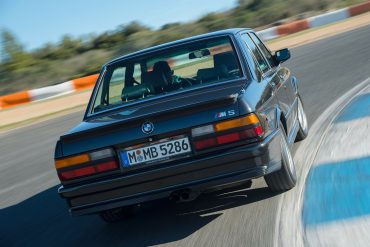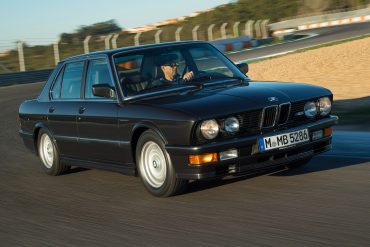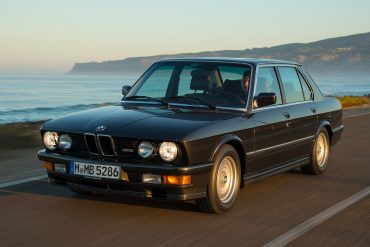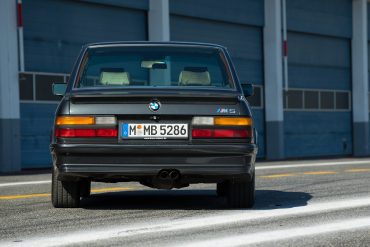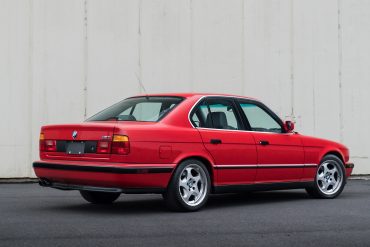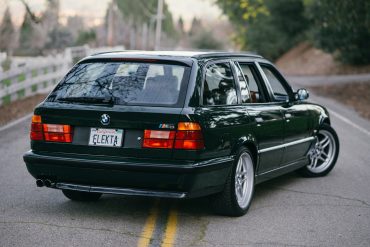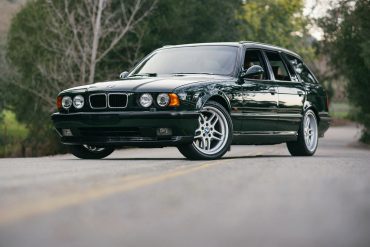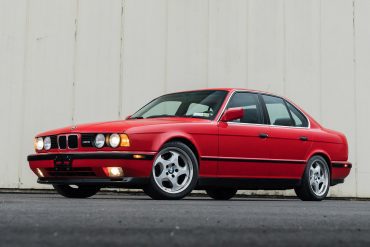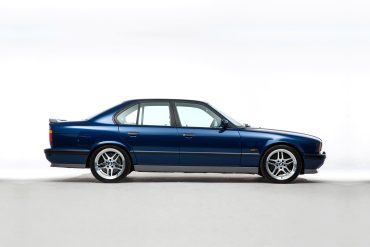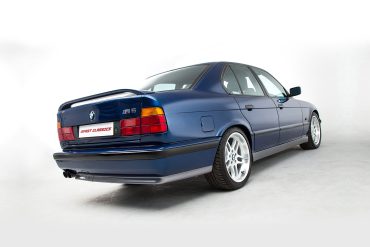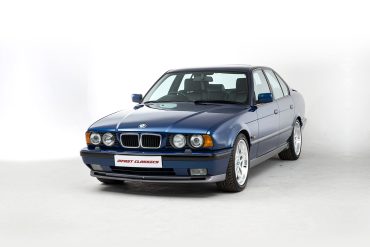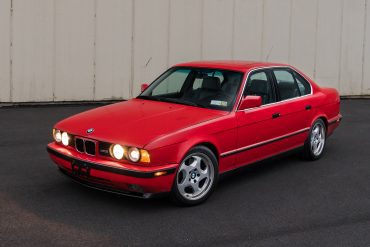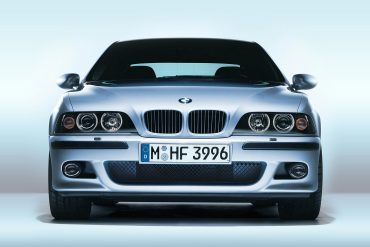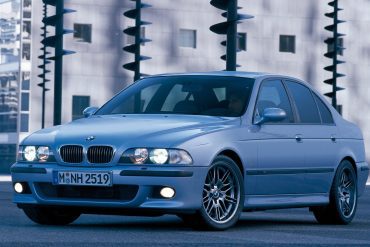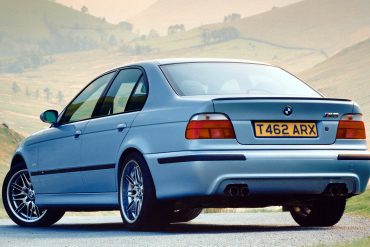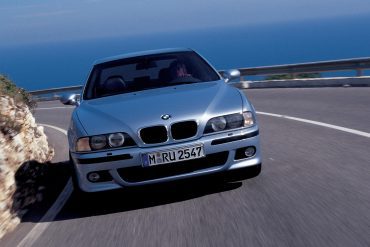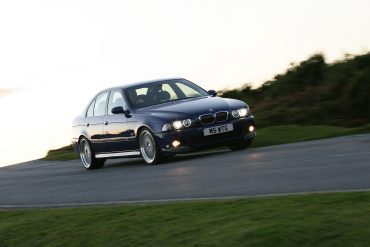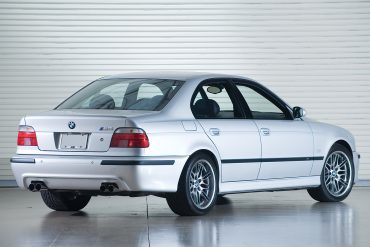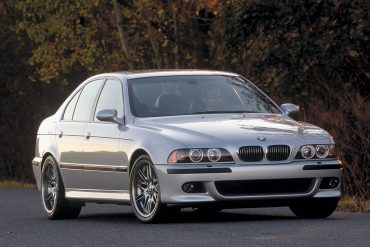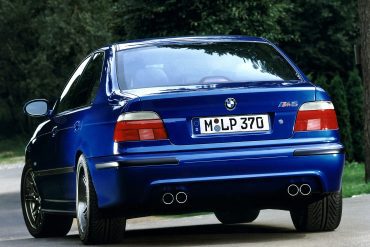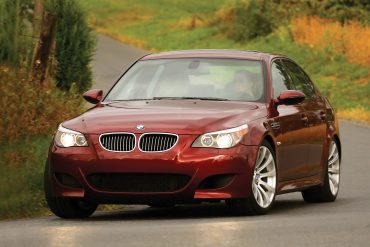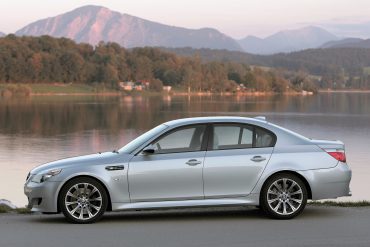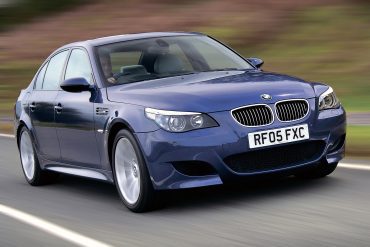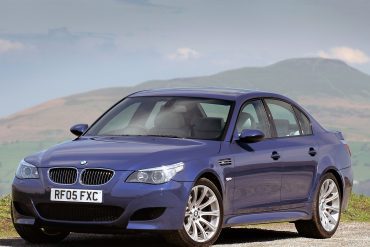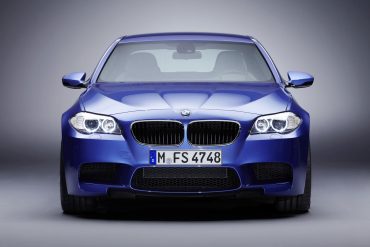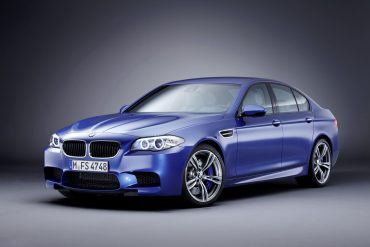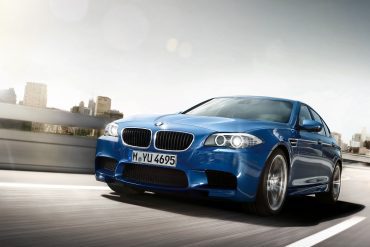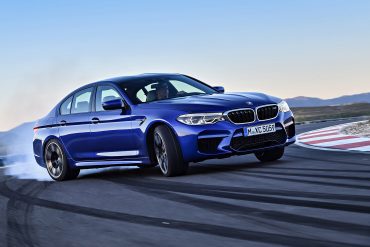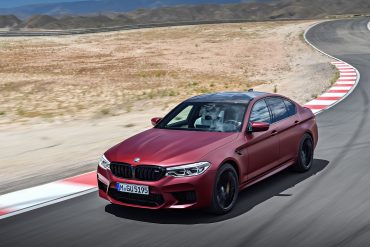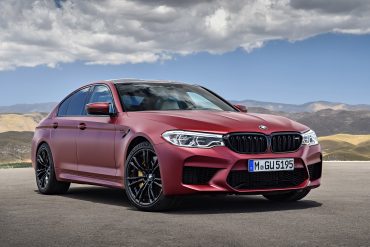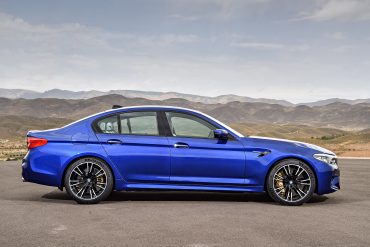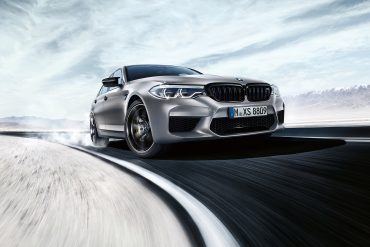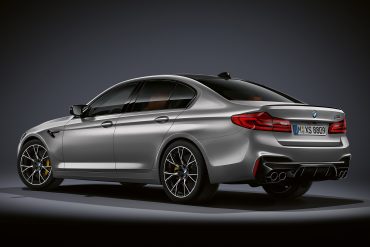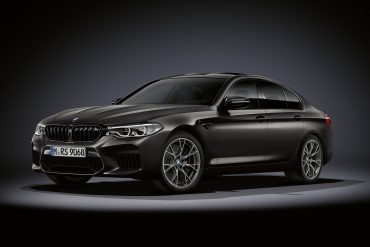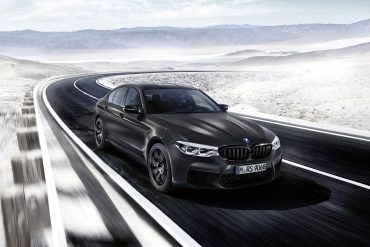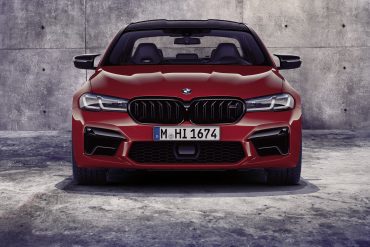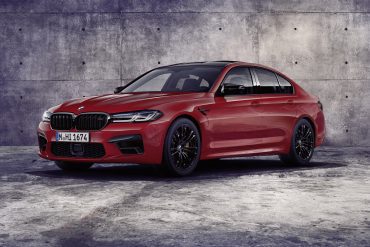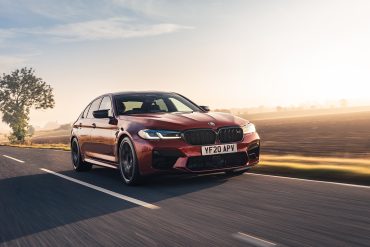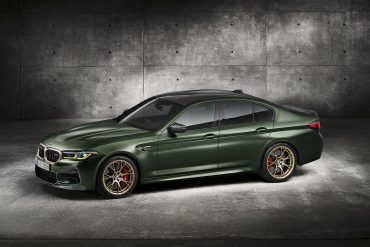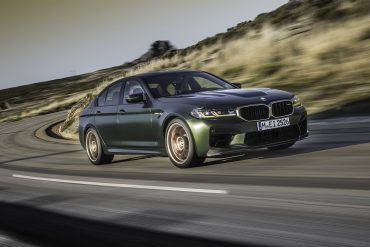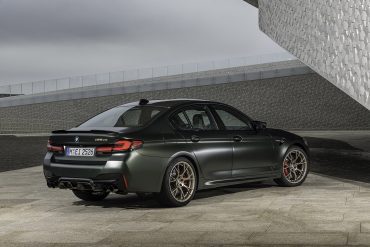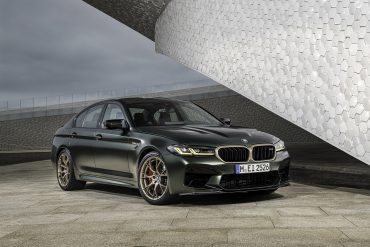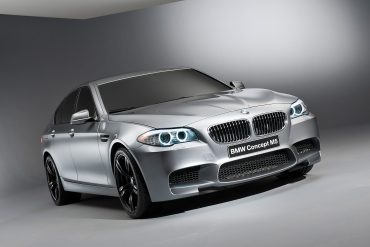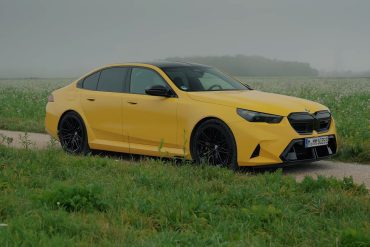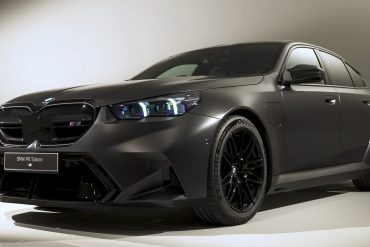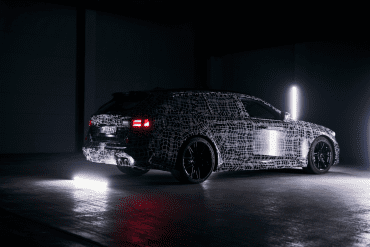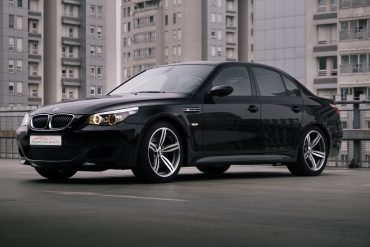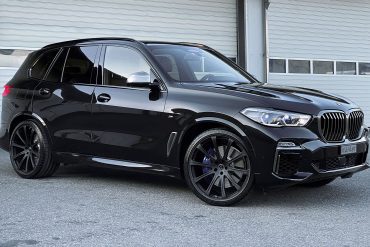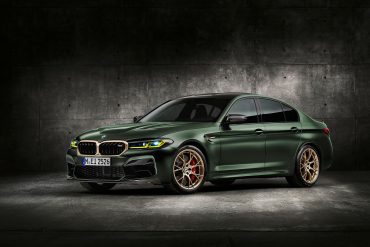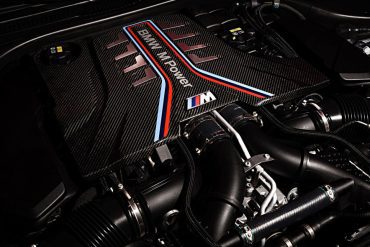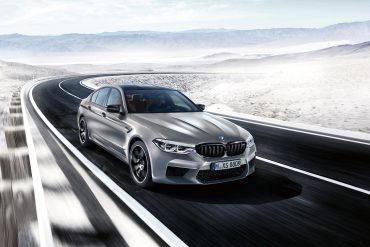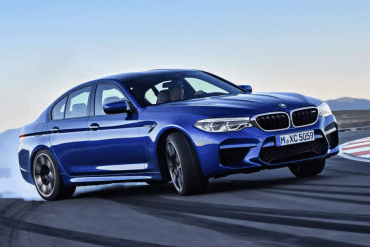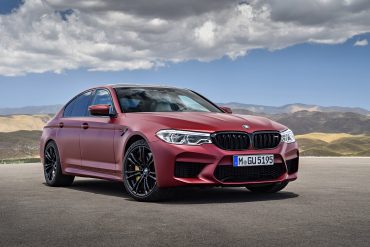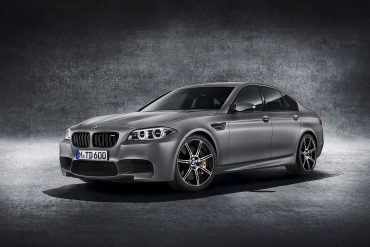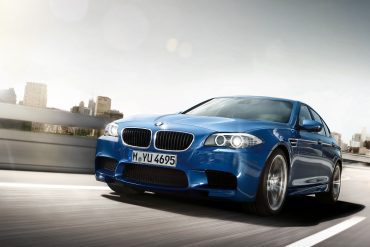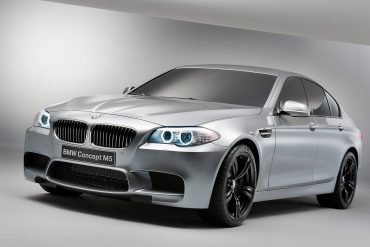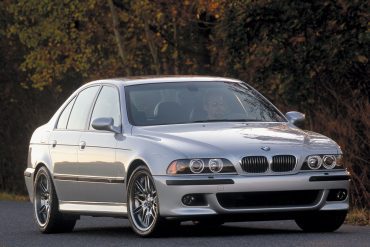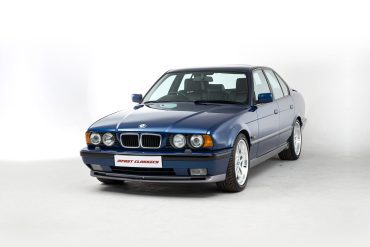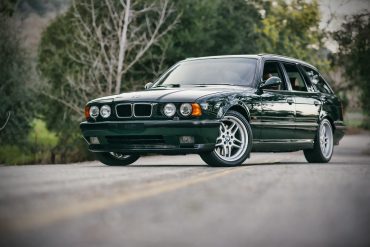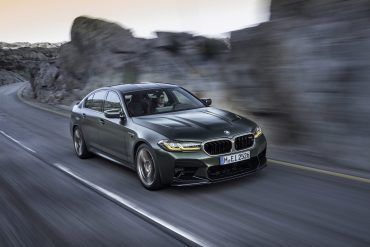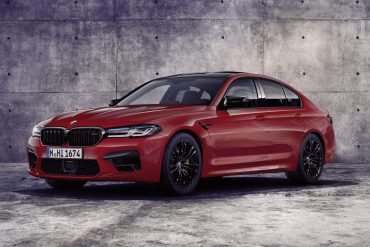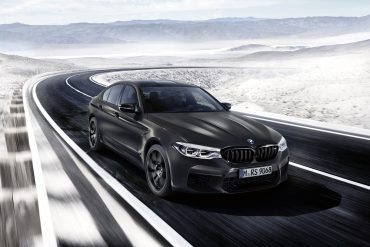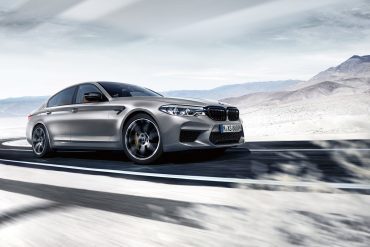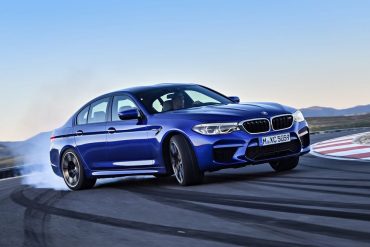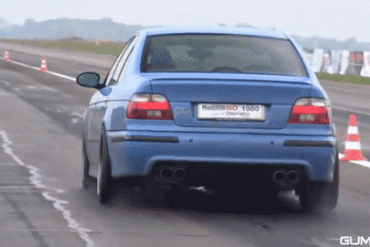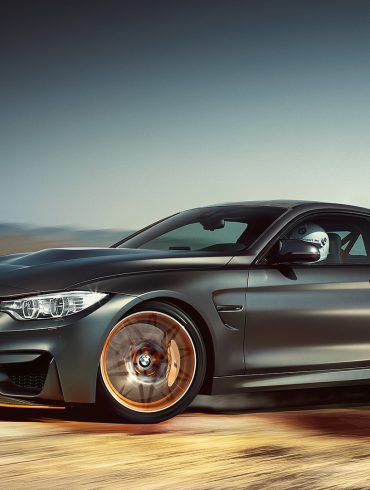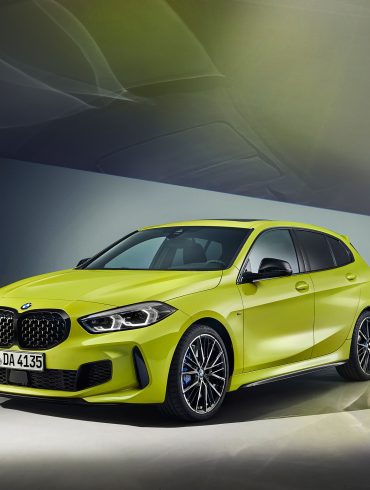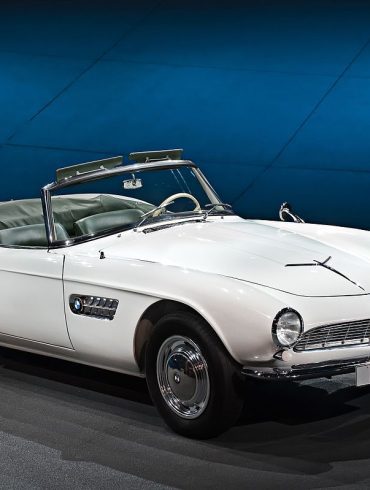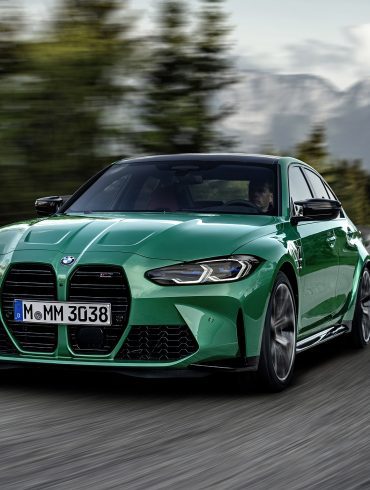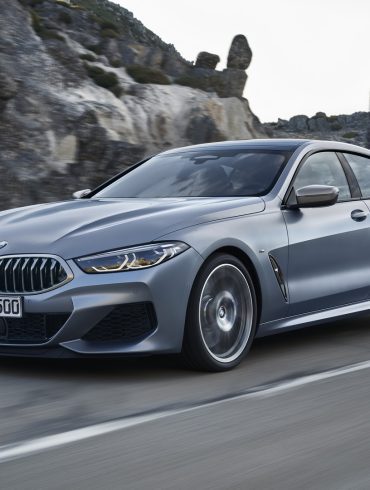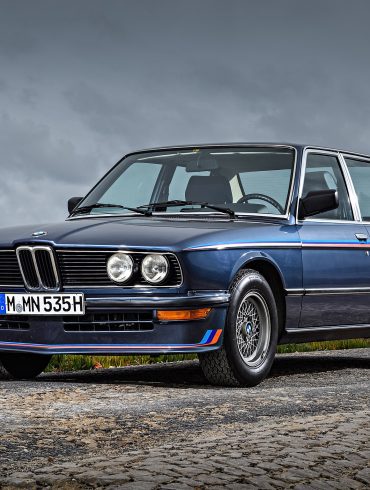1994 BMW M5 (from wikipedia) The BMW E34 is third generation of the BMW 5 Series, which was sold from 1988 to 1996. The E34 was the first 5 Series to be available with the wagon body style, the 525iX was the first 5 Series with all-wheel drive and V8 engines...
BMW M5
1984 - Present
The BMW M5 is more than just a car; it's a legacy. Each generation has contributed to its saga, bringing together luxurious comfort, advanced technology, and exhilarating performance. The M5's iconic status as the ultimate in high-performance sedans has been consistent since 1984 and it stands as a benchmark, a vehicle against which all performance sedans are measured.
Overview / M5 Generations / Models In-Depth / Image Gallery / More Updates
Overview
The BMW M5, a high-performance variant of the BMW 5 Series, stands as a monumental figure in the automotive world, embodying the perfect blend of luxury sedan comfort and sports car performance. Since its inception in the mid-1980s, the M5 has been setting benchmarks in the executive car segment, continuously pushing the boundaries of what is possible. This blog post delves into the various facets that contribute to the M5's iconic status, exploring its evolution, performance, and enduring appeal.
The M5's journey began with the E28 generation in 1984, a car that was essentially a hand-built, high-performance version of the 5 Series, equipped with a modified engine from the BMW M1. It was a sleeper hit; a car that combined the practicality of a sedan with the performance of a sports car, effectively creating a new category of vehicle: the super saloon. This first M5 set the stage for what would become a long lineage of high-performance sedans, each generation outdoing the previous in terms of power, speed, and technological advancements.
Over the years, the BMW M5 has seen several iterations, each marked by significant technological and performance improvements:
E34 M5 (1988-1995): This generation saw the introduction of a more powerful engine and significant chassis improvements. It retained the ethos of a sleeper sedan but with noticeable enhancements in speed, handling, and luxury features.
E39 M5 (1998-2003): Often hailed as the best M5 ever, the E39 M5 was powered by a glorious naturally aspirated V8 engine, delivering a perfect blend of performance, comfort, and timeless design.
E60 M5 (2005-2010): The E60 was a game-changer with its high-revving 5.0-liter V10 engine, inspired by BMW's Formula 1 involvement. It was a technological powerhouse, boasting innovations like the SMG transmission and extensive use of electronic systems for improved driving dynamics.
F10 M5 (2011-2016): Embracing turbocharging, the F10 M5 featured a twin-turbo V8, offering immense power along with more refined luxury elements and improved efficiency.
F90 M5 (2017-Present): The current generation combines blistering performance with everyday usability, introducing all-wheel drive to the M5 lineup for the first time, ensuring its immense power is more accessible and controllable.
At the heart of the M5's appeal is its breathtaking performance. Each generation has been equipped with a state-of-the-art engine, from the original inline-six to the later V8s and V10s, and back to the most potent V8s, each offering a unique driving experience. The M5's power is matched by its advanced chassis engineering, sophisticated suspension systems, and high-performance brakes, making it capable of delivering thrilling driving dynamics that defy its sedan silhouette.
The M5 isn’t just about raw speed; it’s also a pinnacle of luxury. With each generation, BMW has enhanced the M5's interior with high-quality materials, cutting-edge technology, and comfort features that make it a pleasure to drive, whether on a spirited sprint on the autobahn or a long-distance journey. It exemplifies the luxury sports sedan, offering a cabin that’s as refined as its performance is exhilarating.
Beyond its technical achievements, the M5 has become a cultural icon, representing the zenith of automotive engineering and performance prestige. It's a symbol of success, a vehicle desired by enthusiasts and respected by competitors. The M5's longstanding reputation is bolstered by its appearances in films, video games, and its esteemed place in automotive enthusiast communities.
BMW M5 Basics
Manufacturer: BMW M
Production: 1984-1995
Production: 1998-2023
Production: 2024-Present
Layout: Front-engine, RWD (1984–1995 1998-2016)
Layout: Front-engine, AWD (2017-2022)
"The way the M5 blends luxury and track-ready capability is nothing short of astonishing."
Car and Driver
BMW M5 Generations
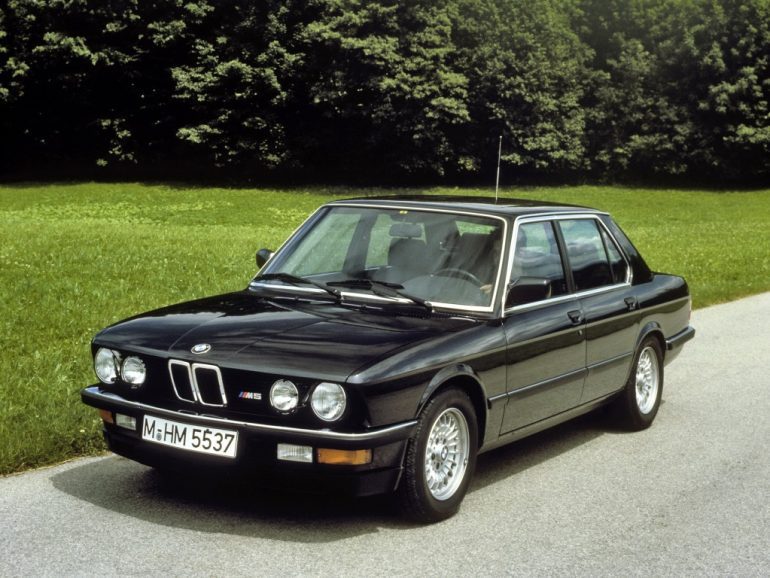
BMW M5 (E28) Basics
Production: 1984–1988
Designer: Claus Luthe
Body style: 4-door sedan
Layout: Front-engine, RWD
Engine: 3.5 L M88/3 or S38 I6
Trans: 5-speed manual
Wheelbase: 2,625 mm
Length: 4,620–4,800 mm
Width: 1,699 mm
Height: 1,415 mm
Curb weight: 1,410 kg (3,109 lb)
Did You Know
The original M5's engine was a modified version of the iconic M1 supercar's inline-six, lovingly assembled by hand.
Summary
Birth of a Performance Icon
BMW M5 (1984-1988)
When BMW unveiled the first M5 in 1984, it didn't just launch a new car; it introduced a legend. This inaugural M5, based on the E28 5 Series, became the archetype for the high-performance sports sedan, blending the luxury of a premium executive car with the prowess of a high-powered sports car. This blog post celebrates the iconic BMW M5 (1984-1988), exploring its development, performance, and lasting impact on the automotive world.
Genesis of a Super Sedan
The BMW M5 originated from a simple yet revolutionary idea: place a powerful sports car engine into a discreet sedan body. The concept was realized by BMW's Motorsport division, now known as BMW M GmbH. They took the 3.5-liter inline-six engine from the BMW M1, the company's mid-engined sports car, and placed it into the E28 5 Series, creating a sleeper sedan that could outperform many sports cars of the era.
Under the Hood: Power Meets Refinement
The heart of the first M5 was the M88/3 engine, a close relative of the M88 engine used in the BMW M1, producing 286 horsepower. This engine was renowned for its high-revving nature, delivering a linear power band and a distinctive, exhilarating exhaust note. Coupled with a five-speed manual transmission, it propelled the M5 from 0 to 60 mph in just over 6 seconds, an impressive feat for a sedan of its time.
Stealthy Yet Sporty Design
Externally, the M5 maintained a level of understatement, adhering to the sleeper ethos that characterized many of BMW's M cars. Apart from subtle badges, a slightly deeper front spoiler, and larger exhaust pipes, the M5's visual differences from standard E28 models were minimal. This understated design philosophy meant the M5 could offer exhilarating performance while maintaining the elegance and comfort of a luxury sedan.
A New Breed of Performance
The M5 was more than just a fast car; it was a complete package. It offered a sport-tuned suspension, larger brakes, and a limited-slip differential, transforming the 5 Series into a car that could handle high speeds with remarkable agility and stability. The sedan's balanced chassis and rear-wheel-drive layout provided an engaging driving experience, while its luxurious interior ensured comfort on long journeys and everyday commutes alike.
Legacy and Impact
The BMW M5 (1984-1988) set a benchmark for performance sedans, creating a new vehicle category that combined practicality with unparalleled driving dynamics. It challenged prevailing automotive norms, proving that a sedan could deliver sports car-beating performance without sacrificing comfort or luxury. The E28 M5's blend of speed, subtlety, and sophistication has influenced countless performance cars since.
BMW M5 (1988-1995)
When BMW unveiled the second generation of the M5 (E34) in 1988, it wasn't just introducing a new car; it was setting a new benchmark for what a sports sedan could be. Building on the formidable foundation laid by its predecessor, the E34 M5 elevated the blend of luxury, performance, and practicality to unprecedented heights. This era of the M5, spanning from 1988 to 1995, encapsulated a period of subtle refinements, technological advancements, and performance enhancements that solidified its iconic status in the automotive world.
Evolution of an Icon
The E34 M5 was a marvel of its time, crafted with the precision and attention to detail that has become synonymous with BMW's M division. It was the epitome of a sleeper car—understated in its appearance but monumental in its performance capabilities. The design was an evolution rather than a revolution, retaining the classic BMW aesthetics but with a sportier stance and subtle M-specific cues that hinted at the power lurking beneath its refined exterior.
Powertrain and Performance
At the heart of the E34 M5 was a powerhouse that would become legendary—the inline-six cylinder S38 engine. Initially, it boasted a 3.6-liter displacement, which was later increased to 3.8 liters in 1991, enhancing its power output from 286 hp to 340 hp. This engine was a masterpiece of engineering, delivering smooth, linear power, and a distinctive, sonorous exhaust note that still resonates with car enthusiasts today.
The M5 was one of the fastest sedans of its time, capable of accelerating from 0 to 60 mph in just over 6 seconds, a feat that remains respectable even by today's standards. It was paired with a precise 5-speed manual transmission that allowed drivers to harness the engine's full potential, offering an engaging and exhilarating driving experience.
Technological Innovations and Luxury
The E34 M5 wasn't just about raw power; it was also a pioneer in integrating cutting-edge technology and luxury features. It came equipped with advanced suspension technology, including the Electronic Damping Control (EDC) system, which allowed the car to offer both a comfortable ride and sporty, dynamic handling. The interior was a blend of luxury and functionality, with sumptuous leather seats, rich wood trim, and an ergonomic layout that put the driver in command.
Racing Heritage and Limited Editions
The M5's racing DNA was evident in its performance, but BMW took it a step further by introducing limited editions like the M5 Touring, the Cecotto Edition, and the Winkelhock Edition, which were even more focused on delivering a race-inspired driving experience. These rare variants are highly coveted by collectors today, celebrated for their unique features and historical significance.
Legacy and Impact
The 1988-1995 BMW M5 set a standard that would define the sports sedan segment for years to come. It was more than just a car; it was a statement—a perfect balance of sophistication, speed, and everyday usability that few could match. Its legacy is not merely about the technological achievements or the performance statistics; it's about the emotion and passion it evokes, a testament to BMW's engineering excellence and a symbol of the M division's racing heritage.
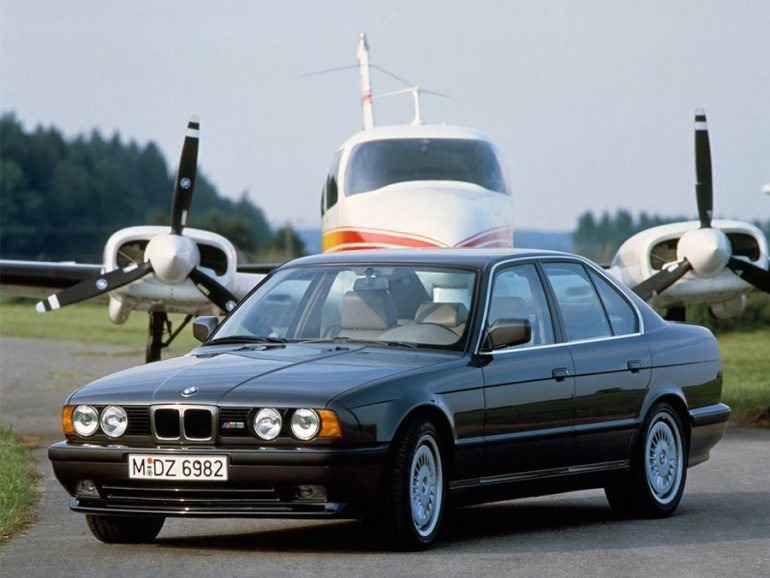
BMW M5 (E34) Basics
Production: 1988-1995
Designer: Ulf Weidhase
Body style: 4-dr sedan, 5-dr wagon
Layout: Front-engine, RWD
Engine: 3.5 L (3,535 cc) S38 I6
Engine: 3.8 L (3,795cc) S38 I6
Trans: 5-speed manual ('88–'94)
Trans: 6-speed manual ('94–'95)
Wheelbase: 2,760 mm
Length: 4,720 mm
Width: 1,750 mm
Height: 1,392 mm
Curb weight: 1,745 kg (3,847 lb)
Did You Know
The E34 generation introduced the M5 Touring (wagon), a rare combination of family hauler and track-day weapon.
Summary
A Blend of Luxury and Performance Mastery
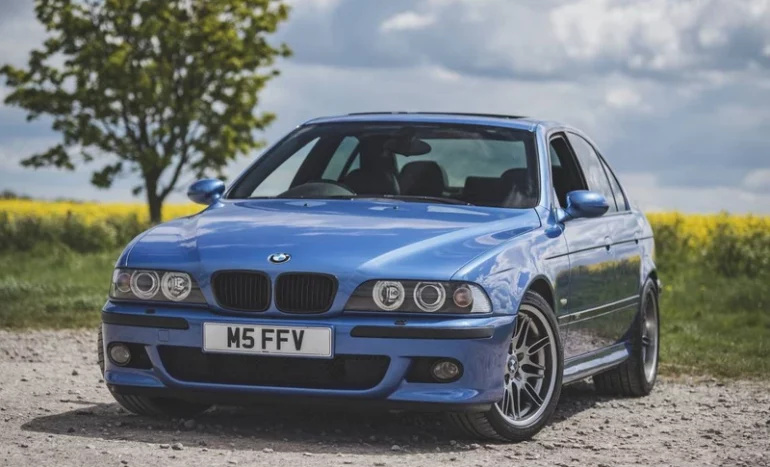
BMW M5 (E39) Basics
Production: 1998-2003
Designer: Ulf Weidhase
Body style: 4-dr sedan
Layout: Front-engine, RWD
Engine: 4.9 L S62 V8
Trans: 6-speed manual
Wheelbase: 2,830 mm
Length: 4,783 mm
Width: 1,801 mm
Height: 1,412 mm
Curb weight: 1,795 kg (3,957 lb)
Did You Know
The E39 is often praised as one of the best-handling M5s of all time, offering superb balance and driver feedback.
Summary
The Quintessential Super Sedan
BMW M5 (1998-2003)
The turn of the millennium heralded a new era for BMW's iconic M5, as the 1998-2003 model years introduced the world to the E39 M5, a vehicle that would set new standards for what a performance sedan could achieve. This generation of the M5 combined groundbreaking performance, understated luxury, and cutting-edge technology to create what many enthusiasts and critics consider one of the greatest sports sedans of all time.
A Design That Speaks Volumes
The E39 M5 maintained the BMW tradition of evolutionary rather than revolutionary design changes. Its styling was subtle and refined, with just enough aggression to hint at the car's capabilities. The car's exterior featured distinctive M trademarks like the quad exhausts, aggressive front bumper with larger air intakes, and the subtle "M5" badging, all of which complemented the elegant lines of the standard 5 Series, making it a sleeper hit among those in the know.
Heart of a Beast: The S62 V8 Engine
Under the hood, the E39 M5 boasted the magnificent S62, a 4.9-liter V8 engine that was a marvel of its era, producing 400 horsepower and 369 lb-ft of torque. This naturally aspirated powerhouse delivered a sonorous exhaust note, a smooth power delivery, and performance figures that could shame many sports cars of its time. The M5 could sprint from 0-60 mph in just 4.8 seconds, a figure that remains respectable even by today's standards.
Engaging Dynamics and Innovative Technology
Driving the E39 M5 was an experience like no other, thanks to its superb balance, rear-wheel-drive layout, and a 6-speed manual transmission that was the only option available, ensuring a purist driving experience. The vehicle was equipped with dynamic stability control and a sport mode that sharpened the throttle response, making it a car that could be driven daily in comfort or pushed to its limits on the back roads.
The M5 didn't just excel in straight-line performance; it was also a master of the corners. Its sophisticated suspension setup, near-perfect weight distribution, and communicative steering provided an engaging driving experience that few other sedans could match. It was a car that could comfortably ferry the family by day and transform into a thrilling sports car by night.
Luxury Meets High Performance
Inside, the E39 M5 offered a cabin that blended sportiness with luxury. High-quality materials, supportive sport seats, and an array of advanced technological features made it a top-tier executive sedan. It was spacious, comfortable, and equipped with all the amenities expected in a high-end luxury car, including an advanced infotainment system, dual-zone climate control, and more, all while enveloping the driver and passengers in a cocoon of refined sportiness.
The Legacy of the E39 M5
The 1998-2003 BMW M5 is often celebrated as the best M5 ever made, and for many, it represents the peak of the M division's philosophy, combining usability, luxury, and exhilarating performance. Its naturally aspirated V8, rear-wheel drive, and manual transmission are reminiscent of a bygone era in automotive engineering, making it highly sought after by collectors and driving enthusiasts alike.
BMW M5 (2004-2010)
Between 2004 and 2010, the BMW M5, known internally as the E60 M5, embarked on a journey that would redefine the super sedan segment. This generation was a radical departure from its predecessors, primarily due to its heart-stopping V10 engine, a feature that not only set it apart from its rivals but also marked a pinnacle in the engineering prowess of BMW's M division. This blog post dives into the era of the E60 M5, exploring how this model became an icon of performance, sophistication, and technological innovation.
A Revolutionary Powertrain
The centerpiece of the E60 M5 was its 5.0-liter V10 engine, a marvel of engineering inspired by BMW's Formula 1 involvement at the time. Producing 507 horsepower and 384 lb-ft of torque, this engine was a symphony of high-revving excitement, delivering a top speed that was electronically limited to 155 mph but could reach nearly 200 mph with the limiter removed. The M5's V10 was capable of catapulting the car from 0 to 60 mph in just 4.1 seconds, combining the raw intensity of a sports car with the practicality of a luxury sedan.
Pioneering Transmission Technology
The E60 M5 introduced the world to BMW's SMG (Sequential Manual Gearbox), a 7-speed transmission that offered lightning-fast gear changes through either the steering wheel-mounted paddle shifters or the gear lever. This transmission was a significant talking point, providing a race-car-like feel that was both praised and critiqued for its aggressive character, especially in its most dynamic settings.
Later in its lifecycle, BMW responded to consumer demand by offering a 6-speed manual transmission in the North American market, catering to purists who craved a more traditional driving experience with their high-powered sedan.
Advanced Driving Dynamics
BMW's commitment to technological advancement was evident in the E60 M5's driving dynamics. The car featured an Electronic Damper Control system that allowed the driver to adjust the suspension settings, and a variable M differential lock that improved traction and stability. The inclusion of the M Dynamic Mode, part of the vehicle's dynamic stability control system, enabled more spirited driving by allowing greater wheel slip before intervening.
A Cabin That Blends Luxury with Sportiness
Inside, the M5 was as luxurious as it was sporty. The cabin was adorned with high-quality materials, M-specific instruments, and advanced technology, including the iDrive system, which controlled the car's entertainment and navigation features. Seats were designed to offer support and comfort in equal measure, making the M5 a car that was as at home on the racetrack as it was on long cross-country tours.
Controversial Yet Iconic Design
The E60 M5 bore the controversial design language initiated by BMW's former chief designer, Chris Bangle. Its bold lines, unique proportions, and distinctive styling elements, like the "flame surfacing" and high trunk lid, sparked debate among enthusiasts and critics alike. Yet, this design has aged gracefully, and what was once polarizing is now often viewed as a daring and visionary interpretation of BMW's design ethos.
The Legacy of the E60 M5
The BMW M5 from 2004 to 2010 remains one of the most ambitious and exhilarating models in the lineage of M cars. It was a vehicle that pushed the boundaries of what was possible in a sports sedan, blending everyday usability with the soul-stirring excitement of a high-performance race car. The E60 M5's V10 engine—a rarity in the sedan world—set a benchmark for power, performance, and sound.
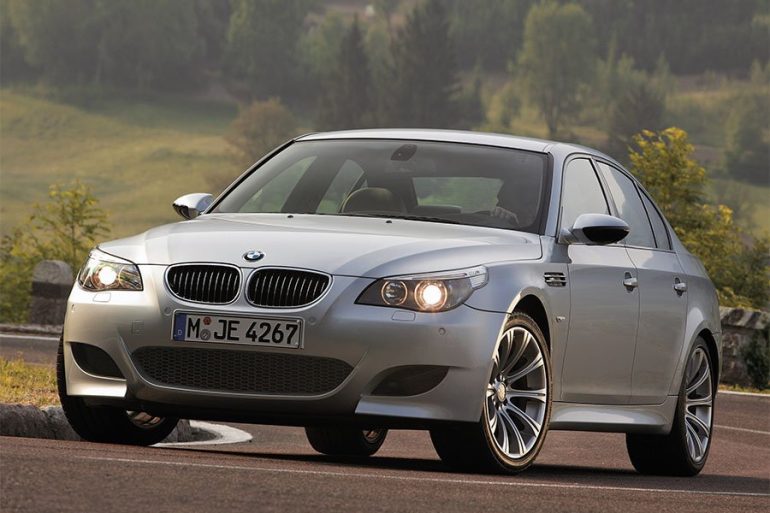
BMW M5 (E60/E61) Basics
Production: 2004-2010
Model Years: 2005-2010
Designer: Karl Elmitt
Body style: 4-dr sedan (E60)
Body style: 5-dr wagon (E61)
Layout: Front-engine, RWD
Engine: 5.0 L S85 V10
Trans: 7-speed SMG-III
Trans: 6-speed manual (U.S Only)
Wheelbase: 2,890 mm
Length: 4,755 mm - 4864 mm
Width: 1,846 mm
Height: 1,469 mm - 1,512 mm
Curb weight: 1,855 - 1955 kg
Did You Know
The E60's 5.0-liter V10 was a technological marvel, inspired by BMW's F1 engines of the era.
Summary
Unleashing the Beast with V10 Power
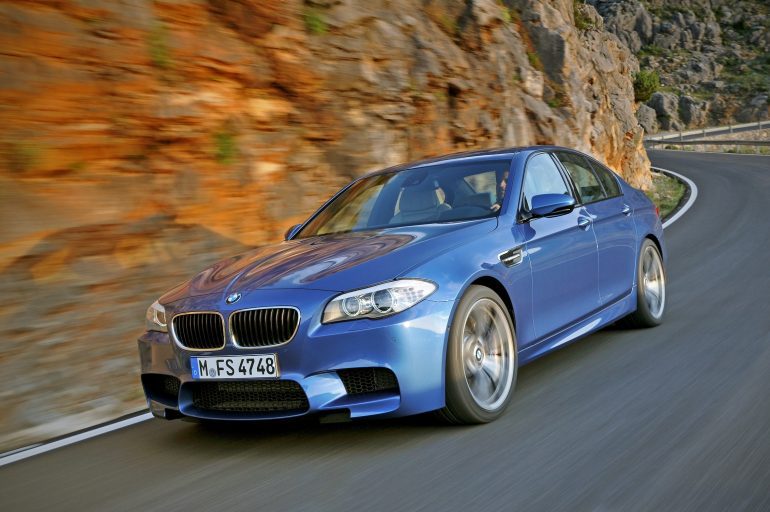
BMW M5 (F10) Basics
Production: 2011-2016
Model Years: 2012-2016
Designer: Ulf Weidhase, Jacek Fröhlich
Body style: 4-dr sedan
Layout: Front-engine, RWD
Engine: 4.4 L S63 Twin-Turbo V8
Trans: 7-speed Dual-Clutch
Trans: 6-speed manual (U.S Only)
Wheelbase: 2,970 mm
Length: 4,910 mm
Width: 1,891 mm
Height: 1,451 mm
Curb weight: 1990 kg (4,387 lb)
Did You Know
BMW introduced the optional Competition Package, bumping power and sharpening the handling.
Summary
A Symphony of Power and Refinement
BMW M5 (2011-2016)
The BMW M5 has long stood as the quintessential high-performance sports sedan, blending the comfort and practicality of a luxury car with the heart and soul of a track beast. The 2011-2016 iteration, known as the F10 M5, marked a significant evolution in the model's storied lineage, introducing a new era of turbocharged performance while maintaining the sophisticated poise and dynamism that the M5 badge represents. This blog post delves into the essence of the F10 M5, exploring how it continued to set benchmarks in the super-sedan segment.
Embracing Turbocharged Performance
The F10 M5 represented a pivotal shift in BMW's engineering approach, transitioning from the high-revving, naturally aspirated engines of its predecessors to a more powerful and efficient turbocharged unit. At its heart lay a 4.4-liter twin-turbo V8 engine, a masterpiece that combined BMW's M TwinPower Turbo technology with high precision direct fuel injection and Valvetronic variable valve control. Delivering a staggering 560 horsepower and 502 lb-ft of torque, this powertrain was capable of propelling the M5 from 0 to 60 mph in just 4.2 seconds, with an electronically limited top speed of 155 mph that could be increased to 190 mph with the optional M Driver’s Package.
Refined Aggression in Design
The F10 M5 subtly communicated its aggressive capabilities through a design that was both elegant and assertive. It built on the base 5 Series with M-specific enhancements like a more muscular body, distinctive front and rear bumpers, side skirts, quad exhausts, and the iconic M gills on the front fenders. The car struck a perfect balance between understatement and sportiness, making it a vehicle that could confidently stand out at both the racetrack and the opera.
Advanced Technological Integration
BMW equipped the F10 M5 with an array of advanced features that enhanced both its performance and the driving experience. The inclusion of an Active M Differential improved traction and stability, while the M-specific Dynamic Damper Control and Servotronic steering system provided a driving experience that could be tailored to any preference, from comfortable cruising to spirited, sporty driving. Inside, the M5 featured a luxurious cabin with state-of-the-art technology, including the latest iDrive system, an advanced navigation system, and a high-fidelity audio system, ensuring that it was as much a pleasure to drive as it was to be driven in.
A Chassis Tuned for Excellence
The engineering prowess of the F10 M5 extended to its chassis, which was specifically tuned to handle the immense power output of the engine. The integration of M-specific suspension components, along with electronically controlled shock absorbers and high-performance compound brakes, ensured that the M5 delivered a driving experience that was both exhilarating and secure. The optional carbon-ceramic brakes offered even greater stopping power, making the M5 as competent on the racetrack as it was on the autobahn.
The M5 Legacy Continues
The BMW M5 (2011-2016) stands as a testament to BMW's ability to innovate while staying true to its performance-oriented heritage. This iteration of the M5 managed to push the boundaries of what was expected from a luxury sports sedan, offering blistering performance, cutting-edge technology, and uncompromising comfort.
BMW M5 (2017-2023)
The BMW M5 has long been the benchmark for performance sedans, combining the luxury and practicality of a business-class car with the heart of a high-performance sports car. The 2017-2023 iteration, known as the F90 M5, marked a revolutionary chapter in the model’s illustrious history, introducing all-wheel drive to the M5 lineup for the first time and showcasing unparalleled technological advancements. This blog post explores the F90 M5’s journey, highlighting how it continued to redefine the super sedan segment.
A Bold Leap Forward: The Introduction of M xDrive
The most significant evolution in the F90 M5 was BMW’s M xDrive system, an all-wheel-drive setup with a rear-biased configuration that could be adjusted to suit the driver’s preferences or completely disengaged to allow for traditional rear-wheel drive. This transformative feature enhanced the M5’s versatility, providing unyielding grip and stability without sacrificing the dynamic driving characteristics for which the M5 is renowned. The system ensured that the immense power was effectively translated to the road, offering a balance of everyday usability and racetrack-ready agility.
Unleashing Power: The Twin-Turbo V8 Engine
Under the sculpted hood of the F90 M5 lurked a reworked 4.4-liter twin-turbocharged V8 engine, an engineering marvel that churned out up to 617 horsepower in the Competition variant. This powerhouse enabled the M5 to catapult from 0-60 mph in just 3.1 seconds, with a top speed that could reach up to 189 mph when equipped with the M Driver’s Package. The engine’s prodigious output was managed by an eight-speed M Steptronic transmission, which provided smooth, quick shifts and an exhilarating driving experience.
Mastery in Design and Dynamics
The F90 M5’s design was both an evolution and a statement, featuring aggressive aerodynamic enhancements, wider fenders, and larger air intakes, all while maintaining the sophistication expected of a BMW 5 Series. The car’s aesthetic was a perfect reflection of its dual-character: a high-performance sports car and a luxurious executive sedan.
Handling and dynamics were further refined, with adaptive M suspension and an Active M Differential ensuring that the car’s increased power output was matched by an equally impressive level of control and agility. The F90 M5 was not just fast in a straight line; it was also incredibly adept at carving corners, offering a driving experience that was both exhilarating and confidence-inspiring.
Technological and Luxurious Refinements
The interior of the F90 M5 was a high-tech haven, blending sportiness with luxury. It featured the latest iDrive infotainment system, complete with gesture control, a high-resolution display, and a suite of advanced connectivity features. M-specific elements like the customizable M1 and M2 buttons allowed drivers to save their preferred driving settings, adjusting everything from the engine response to the suspension setup and steering feel.
The M5’s Evolutionary Journey
The 2017-2023 BMW M5 epitomized the peak of automotive excellence, a testament to BMW’s relentless pursuit of perfection. It delivered a remarkable combination of performance, comfort, and advanced technology, pushing the boundaries of what’s possible in a luxury performance sedan.
The F90 M5 facelift was unveiled in June 2020 for the 2021 model year. Major highlights of the facelift included revised headlamps and taillamps with the headlamps featuring a minimalist L-shaped design for the daytime running lights. The front bumper and rear bumpers were also redesigned, now featuring an overall sharp design. The base model didn't receive any mechanical changes while the M5 Competition now has revised shock absorbers and tuning for the adjustable suspension system. The variant also gets a new "Track" mode which when enabled shuts off all driver aids and the infotainment system for a more focused driving experience.
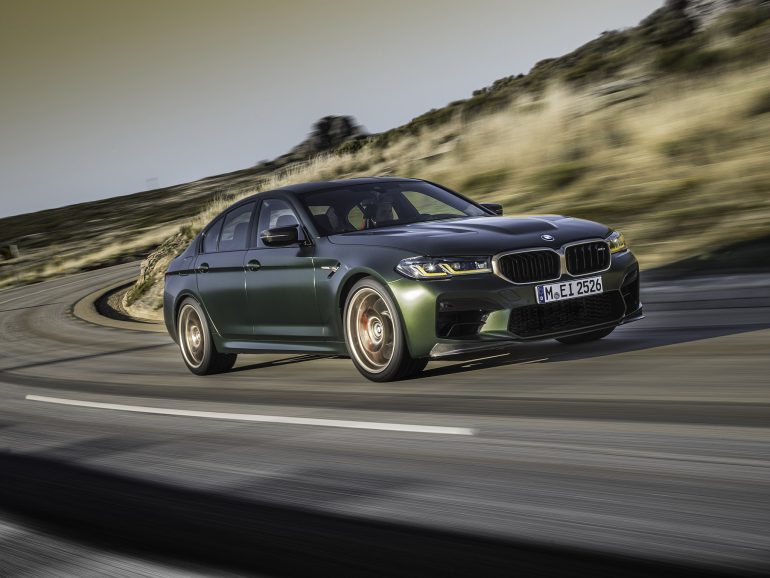
BMW M5 (F90) Basics
Production: 2017-2023
Model Years: 2018-2023
Designer: Seungmo Lim
Body style: 4-dr sedan
Layout: Front-engine, AWD
Engine: 4.4 L S63 Twin-Turbo V8
Trans: 8-speed auto
Wheelbase: 2,982 mm
Length: 4,965 mm
Width: 1,903 mm
Height: 1,473 mm
Curb weight: 1982 kg (4,370 lb)
Did You Know
The F90 M5 was the first to feature all-wheel-drive, with a rear-biased setup for maximum driving thrills and a rear-wheel drive drift mode.
Summary
Reinventing the Super Sedan Paradigm
Our Favorite BMW M5 Images
fff
"The benchmark against which all other super sedans are measured. The M5 balances everyday comfort with jaw-dropping performance."
Top Gear


